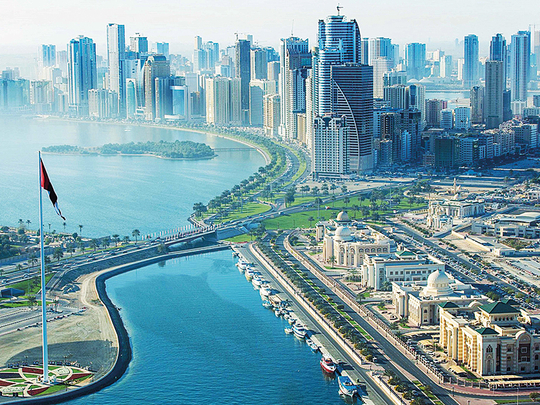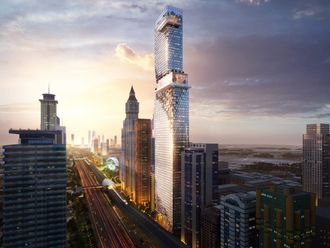
Dubai: It’s becoming increasingly difficult to decide between renewing a tenancy contract in Sharjah or seek a new one in Dubai.
Rentals at popular residential locations in Sharjah remain under extreme pressure, with the Rolla area recording the “most significant” annual drop.
In Q1-18 alone, Rolla rents were down by an average 4 per cent, and remained unchanged in Abu Shagara, Al Butina, Al Yarmook and Al Wahda.
On an annualised basis, rates are down 14 per cent in Al Wahda, 13 per cent in Abu Shagara, 9 per cent in both Rolla and Al Yarmook, and 7 per cent in Al Butina.
Across the northern emirates, rents are down by 11 per cent over the 12-month period ending March 31, according to the latest update from Asteco.
And rents are unlikely to inch up anytime soon, whatever be the expectations of landlords.
“We expect a further pressure on apartment rental rates, as recovery rates in the northern emirates are directly impacted by the delivery of supply in Dubai,” said John Stevens, Managing Director at Asteco.
But even for Sharjah’s residents, this does pose a dilemma - should they try to squeeze out more concessions from their landlords? Or should they make a shift to one of the new homes being delivered in Dubai?
Market sources suggest this factor will remain a constant in Sharjah’s property market.
Each time there is a rental downturn in Dubai, it raises the chances of Sharjah tenants wanting to make the move.
The reverse is just as true each time Dubai’s residential rents hit a hot streak.
What landlords in Sharjah should worry more, sources say, is the demand being generated by the freehold/long-term leasehold communities being developed by Arada, Alef Group, the Eagle Hills-Shurooq joint venture, and Majid Al Futtaim Group.
The Eagle Hills-Shurooq alliance has just launched sales at its project on Maryam Island in the Al Mamzar lagoon.
The Dh2.4 billion development will cover 460,000 square metres, of which 310,000 square metres have been allocated for construction. The first phase is due for completion by the end of 2020.
“These projects are generating consistently high demand, and essentially from those who are already resident in Sharjah,” said an industry source.
“Tenants are convinced this is the time to buy their own homes in Sharjah, and this could put further pressure on rentals when the first homes get delivered later this year and over the next two.
“Sharjah is experiencing a kind of boost that Dubai’s freehold got when it opened up in the early 2000s.”
Moreover, the new wave of freehold properties are not going at a steep premium, and definitely not when compared to what a similar project could command in Dubai.
The rate difference could be anywhere up to 40 per cent.
“The recently implemented legislation that allows non-Arab nationals without a UAE residency visa to purchase properties in Sharjah on a 100-year renewable lease is expected to stimulate demand and ultimately increase foreign investment in the real estate market,” said Stevens.
“The launch of residential developments is on the rise in the northern emirates, with projects spanning a total of over 100 million square feet of land scheduled for completion by 2025 in Sharjah alone.”
Rents take a hit across the northern emirates
More new homes to fill in Dubai and Sharjah always has a bearing on rental rates in the northern emirates. This time is no different either.
In Ajman, rents for more affordable homes fell 1 per cent in Q1-18 and by 12 per cent year-on-year, according to Asteco data.
At the higher end, the drop was by 3 per cent over the first quarter and 11 per cent between Q1-17 and Q1-18.
As for Ras Al Khaimah and Fujairah, studios and three-bedroom apartments had declines of 1 per cent over the quarter, and over the course of the year, dipped by 10 and 13 per cent, respectively for affordable homes.
High-end units had an annual decline of 8 per cent in Ras Al Khaimah and 10 per cent in Fujairah.












